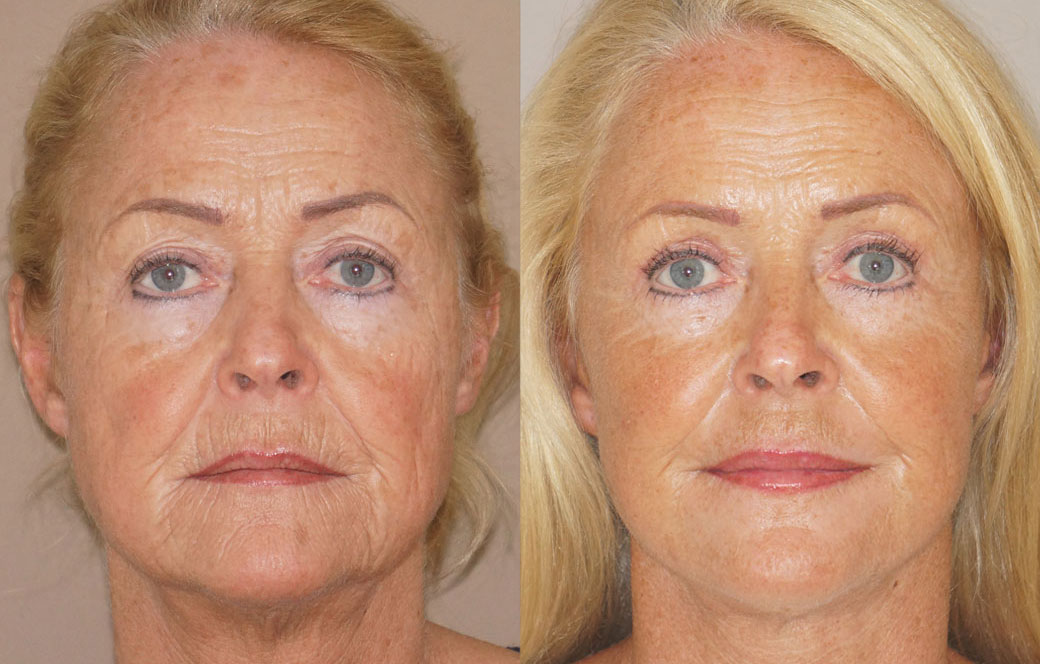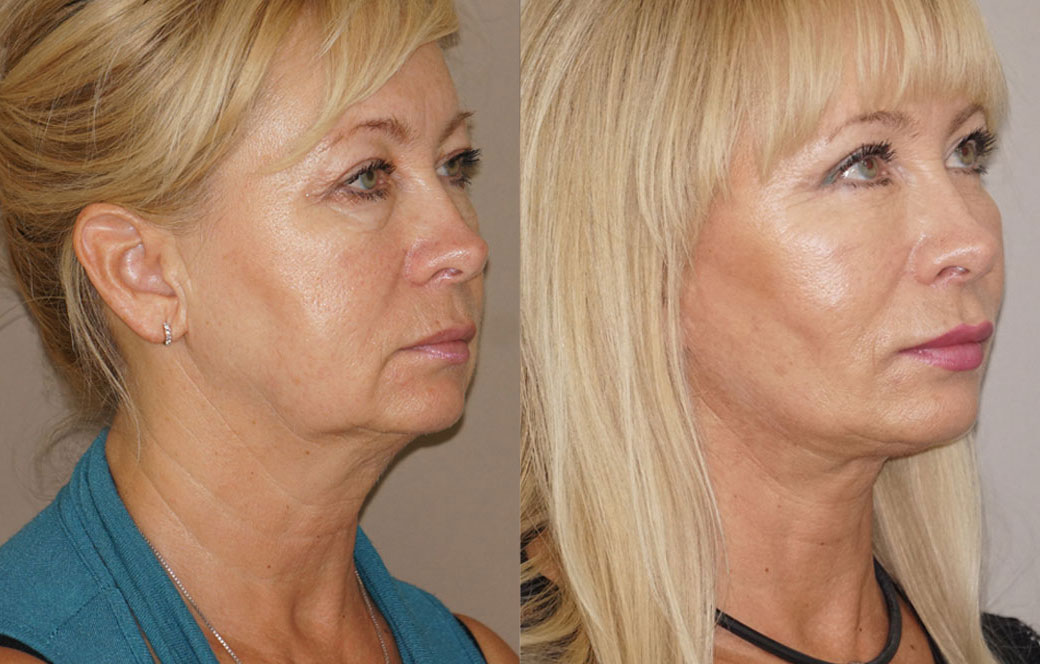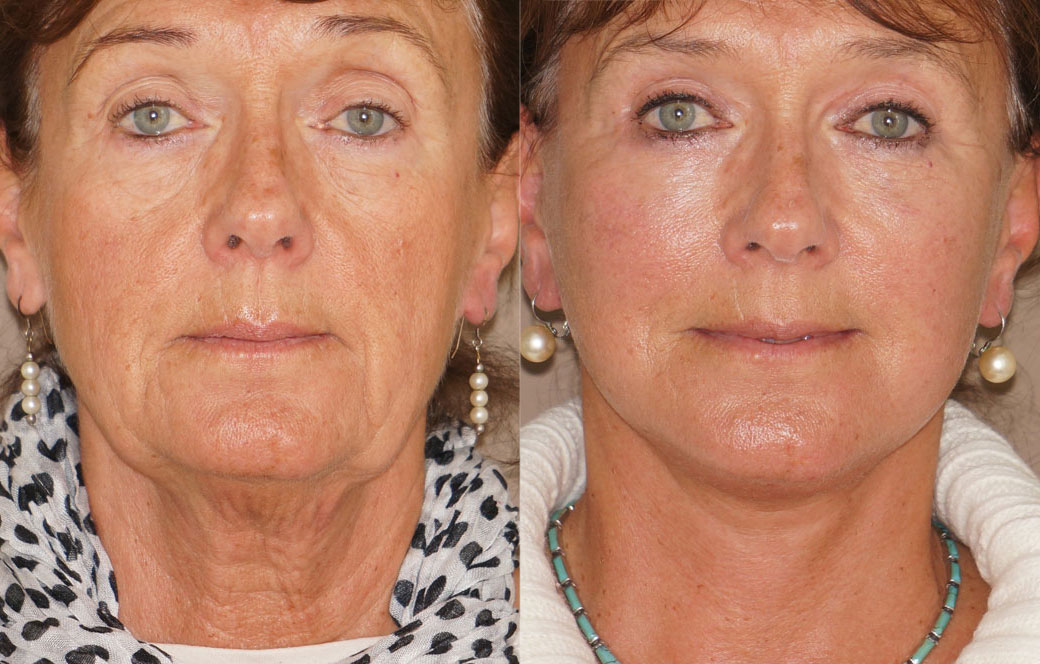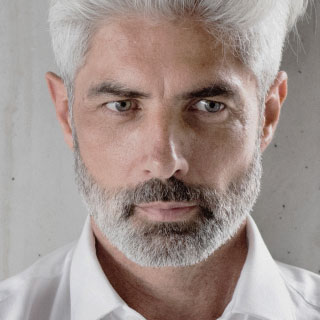What You Need to Know Beforehand
Which type of facelift is right for me?
Your age, skin quality and anatomic proportions are key in choosing the facelift technique best suited to you. We will discuss with you whether a short scar facelift or classic Omega – Incision lift is more appropriate, furthermore we will examine and explain if any changes to your neck; the Platysma (neck) muscle or the jawline/chin projection, would be advisable for the best aesthetic outcome.
Can my skin be addressed in combination with rhytidectomy?
If your skin shows signs of photo-ageing like stains, pigmentation, fine lines/rhytids and a general loss of brilliance, a peeling maybe recommended by us and performed at the same time as your facelift surgery to minimize downtime.
Where are the facelift surgery scars placed?
Depending on your age, skin quality, facial anatomy and the desired rejuvenation effect, the scars are either placed in front of the ear within the natural crease (MACS-Lift) or around the ear towards the back of your hairline (Lower Face and Neck lift). The scars are usually barely visible after 6-12 months.
How is the facelift operation performed?
This kind of procedure is mostly performed under deep intra-venous sedation (Twilight sleep) combined with loco-regional anesthesia. You will sleep throughout the procedure, but you will be able to move your limbs as with regular sleep; this lowers the risk of thrombosis. The procedure is generally pain free and takes between 3-5 hours.
How long is the recovery for a facelift?
Recovery is around 10-14 days with some swelling and bruising during the first 7 days. Stitches may be removed by day 10 and swelling and bruising have mostly subsided after 14 days. Makeup can be worn after a week. There may be some numbness of the skin and hardening of the subcutaneous skin layers during the first 6-8 weeks before recovery is complete.
PAVE-Facelift
Pioneered by Ocean Clinic’s plastic surgeons, the PAVE-Facelift combines a range of surgical and non-surgical procedures, such as liposuction, chemical skin peeling and fat grafting.
The idea of this enhanced facelift is to combine the most effective anti-aging techniques currently known to cosmetic surgery, into one package. All carried out at the same time, it not only offers patients the best results possible, it also reduces the cost, discomfort and downtime associated with having multiple procedures.
Rhytidectomy lifts and tightens the facial muscles and skin, correcting major sagging, meanwhile liposuction is used to target fat deposits under the chin or around the eyes. To improve the appearance of lines, age spots and discolouration, a chemical peel is applied to the skin. A fat transfer will also be done to restore facial volume into the areas required. These could include the lips, cheeks and eye hollows. It is a permanent solution and can also be used to soften deep wrinkles such as those which appear around the mouth and nasolabial folds.
Tackling all signs of aging, the PAVE-Facelift achieves unparalleled results. The treatment is tailored to each patient and is therefore suitable for younger men and women as well as older individuals.
After Surgery and Beyond
Facelift aftercare
The Ocean Clinic concept is to avoid any unnecessary pain and discomfort. Most of our facelift and necklift procedures are performed under local anesthesia with intravenous sedation. This allows for a pain-free procedure with our patients being sedated for comfort purposes only. Postoperative pain after facial surgery is rare, most of our patients only have a slight headache for 24-48hrs treated with oral pain medication.
Most patients can go home on the same day and come for a check-up the following day. Stitches are removed after 10 days. During the first 4 weeks postoperative patients will be referred to our unique physiotherapeutic aftercare for a more rapid recovery and reduced swelling.
We will provide you with a chinstrap to be worn for 6 -7 days. Lifting objects over 5kg must be avoided and avoid sports involving weights for a minimum of 14 days.
Facelift procedure related risks
Facelift surgery has very few complications if carried out by an experienced surgeon in an accredited facility. Rare complications include postoperative bleeding requiring revision, unsatisfactory scar healing requiring scar correction at a later date, and prolonged recovery due to swelling and/or hematoma. Permanent lesions to the facial nerve leading to facial asymmetries are extremely rare and depend on the type of facelift procedure. Changes of sensitivity of the skin are expected during the early postoperative period and disappear with time.
How long does a facelift / necklift last?
Most patients have a very satisfying result for 8-10 years or more. Follow-up studies with a facelift patient and her non-operated twin sister, showed that, even after 25 years, the facelift patient looked younger than her non-operated twin. However, natural facial ageing continuous after any procedure, therefore many of our patients choose to have touch-up procedure or alternative treatments after 10 years.
Facelift alternative treatments
Facial Fat grafting alone is a possible alternative technique if the laxity of skin and muscle is not too severe. Two or more sessions may be necessary as the body absorbs a certain amount of transplanted fat. It may be an option if a quicker procedure is preferable without incisions, but the results are less dramatic than with a face and/or necklift.
A deep dermal skin resurfacing with a Phenol Peel can be a valid treatment alternative for skin with very pronounced elastosis and photo-ageing. This method has dramatic results with pan-facial rejuvenation, but recovery is longer than with the surgical facelift and results and suitability are skin-type dependent.
Ocean Clinics experience in Rhytidectomy
Our surgeons have performed over 700 combined PAVE-lift procedures within the last 10 years. Our clinic is a worldwide leader in combining facelift techniques with both facial fat grafting for re-volumizing of the ageing face, and skin resurfacing with peels to address the skin texture and imperfections. Many of these techniques have been published in international peer-reviewed journals and are on the forefront of the new field of 3-dimensional facial rejuvenation.













